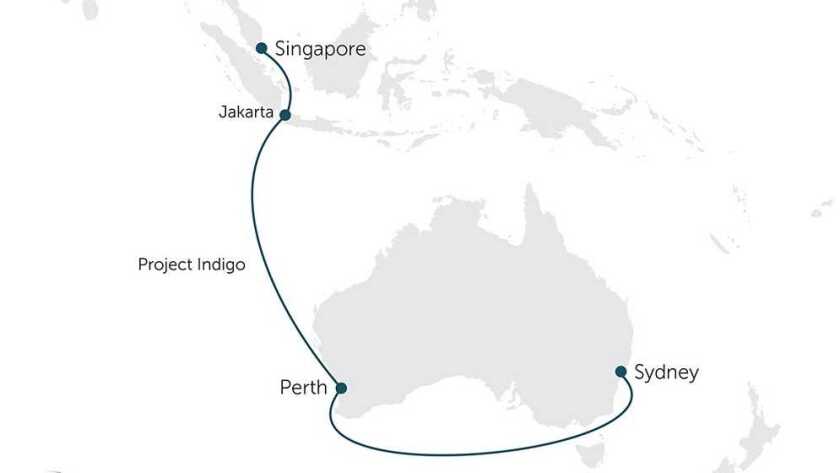Deployed by a consortium of AARNet, Google, Indosat Ooredoo, Singtel, SubPartners and Telstra, the new system will feature new spectrum-sharing technology enabling each member to upgrade their networks and make capacity increases on-demand.
“The development of the INDIGO cable system strengthens the link between our Australian network and the fast-growing South East Asian markets and will deliver our customers faster connectivity and dramatically improved reliability,” said Oliver Camplin-Warner, head of international, Telstra. “Our vast subsea network is a key part of our international growth strategy and we will continue to invest in additional capacity to meet our customers’ increasing demand for data and maintain our network leadership in the Asia-Pacific region.”
9,200km in length, the Indigo cable system will strengthen connectivity between Australia and the fast-growing Southeast Asian markets, providing lower latency and more reliable communication services. Using current coherent optical technology, the cable can support up to 36Tbps, the equivalent of simultaneously streaming millions of movies a second.
“Indigo Central complements Superloop’s metropolitan fibre networks providing high speed capacity and ubiquitous connectivity to terrestrial cable systems across Australia,” added Drew Kelton, chief executive officer, Superloop on behalf of SubPartners. “When combined with the international capacity and interconnectivity to Singapore and Hong Kong, our strategy to virtualise businesses across the Asia Pacific region is now being realised.”
The completion of the cable system comes at a time when Asia’s economy is increasingly being driven by digital connectivity. In fact, according to TeleGeography, bandwidth demand between Asia and Australia will reach 75Tbps by 2025 and the INDIGO subsea cable system will help meet the exponentially growing demand for direct connectivity between Singapore and Australia.
“As South East Asia and Australia become increasingly interconnected, a high-speed and robust connectivity infrastructure plays a critical role in catalysing the development of digital economies across the regions. The completion of INDIGO will accelerate the roll-out of next-generation technologies that rely on low latency and high-bandwidth connectivity such as high-definition video, autonomous vehicles, Internet of Things and robotics applications,” said Ooi Seng Keat, Singtel’s vice president, carrier services, group enterprise.
This milestone follows the announcement in April 2017 that the consortium had made an agreement with Alcatel Submarine Networks to build the Indigo cable system connecting Singapore, Perth and Sydney, with two additional fibre pairs connecting Singapore and Jakarta via a branching unit.
"Part of Google's global infrastructure investments to improve connectivity, we're excited that INDIGO will enable faster and more reliable services for users, as well as boost business capabilities between South East Asia and Australia," continued Ashish Ahuja, global network infrastructure at Google.






